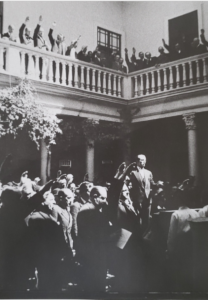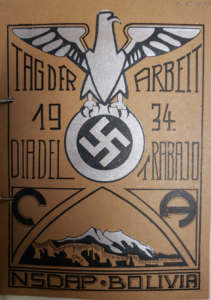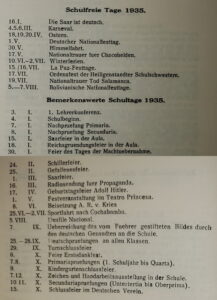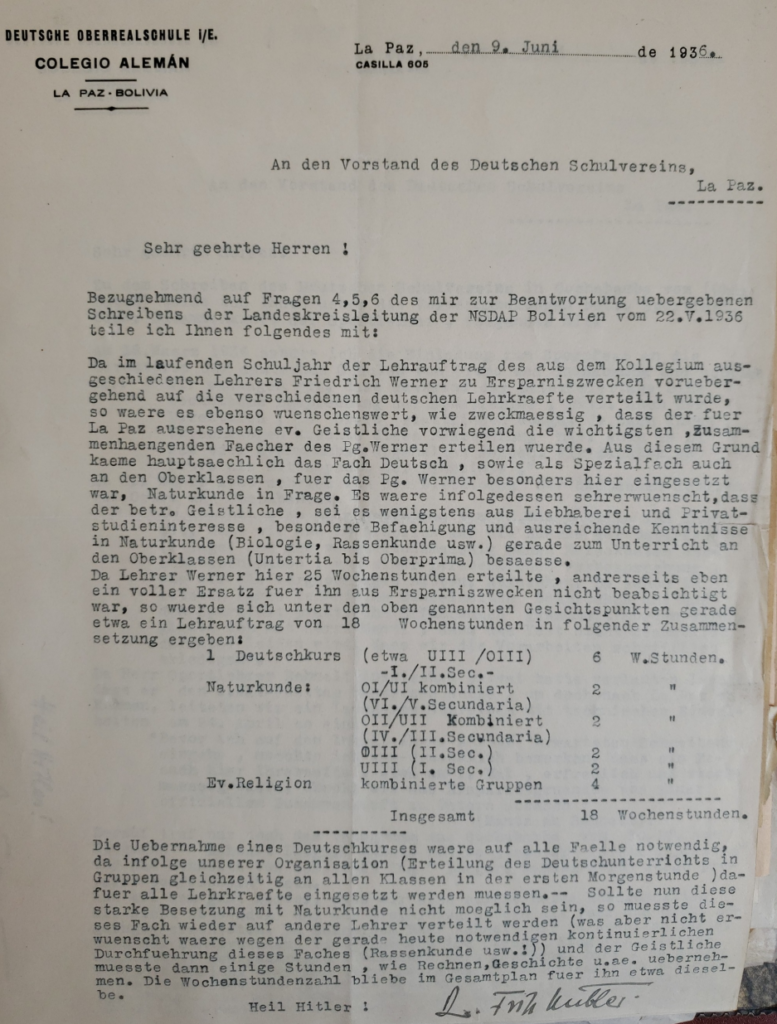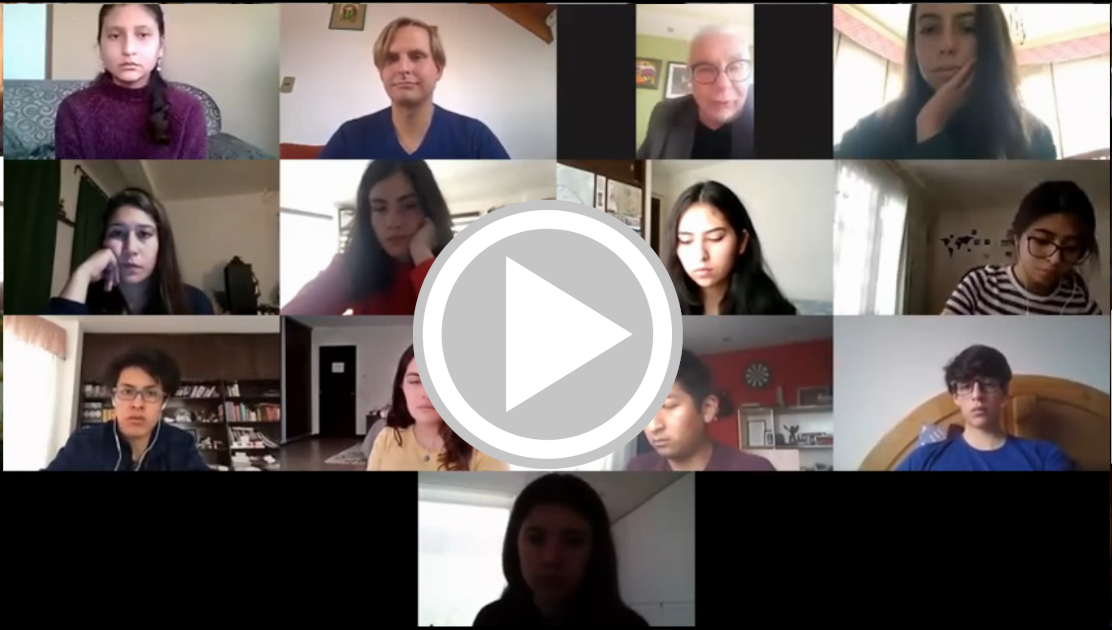.
The Jewish community in Bolivia – German, but not part of the German cultural community
by Alicia Caballero, Camila Pasten and Fabiana Aneiva
Ricardo Udler is spokesman for the Jewish community of Bolivia and president of the Círculo Israelita in La Paz. He is the son of an Argentinean father of Russian origin and a French Jewish mother who survived the Holocaust. His mother fled from National Socialism in Europe and arrived in Bolivia in the post-war period. In the interview Mr Udler told us about the Jewish community in Bolivia, which currently consists of three communities, one in La Paz with 160 members, one in Santa Cruz with 250 members and a third in Cochabamba with 60 members. In the 1930s and 1950s this community had many more members. According to official figures, the Jewish community in Bolivia fluctuated between 15,000 and 18,000 members between the 1930s and 1950s. However, migration was much higher and incalculable, as Bolivia had offered the possibility of obtaining visas since the pre-war period and during and after the World War II. At that time, Bolivia became, to quote the historian Robert Brockmann, “a hotel”. This opportunity was very helpful for Jewish migration, as Bolivia served as a bridge to other borders and countries of interest.
The first wave of migration, which took place in the pre-war period (1932-1936), was characterised exclusively by German Jews. The second wave (1937-1939) was larger as more Jewish families saw the need to escape the growing problems in Europe, war and persecution. The third wave of migration, during the war and the post-war period, was a wave from all over Europe, generally promoted by Jewish bodies abroad. After the war, the Jewish community in Bolivia gradually declined in numbers. This was due to the fact that many of them had only entered the country on an agricultural visa, so they were only allowed to work in this area and were unable to exercise their actual profession. The adjustment proved to be difficult. More and more immigrants decided to look for new opportunities outside the country. In 1955 the Jewish community still had between 1,500 and 2,500 members, a number much smaller than at the beginning and which would decrease over the years. In addition, all those younger Jews who grew up in Bolivia began to finish their studies, left the country and eventually stayed abroad. If we compare Jewish and German immigration to Bolivia, we can say that the former ones arrived and decided not to “unpack their suitcases” because they felt that at some point they would have to emigrate again, while the latter came with the idea of staying.
In this way, Bolivia played a very important role in migration in the 1930s and 1940s, as it was one of the few countries that kept its doors open and took in large numbers of refugees. Bolivia offered them not only a chance to escape and security, but also new opportunities and chances to create a new life for themselves away from the anti-Semitism of the time. Despite its good relations with Germany and its affinity to military National Socialism, the country’s government opened its doors wide, regardless of religion or nationality.
On the other hand, Mr Udler also reported on the relationship between Bolivia and Germany in general. Bolivia always had and still has very good relations with Germany. It is worth mentioning that there were Bolivian governments, such as that of Germán Busch, which felt close to National Socialism, which did not hinder the migration, which was mainly led by German and Polish Jews. However, not only Jews immigrated into the country, but later also several supporters of National Socialism, some of them even became involved in Bolivian politics, such as Klaus Barbie, who became an advisor of the government and the police and a military instructor.
The Jews ,who came to Bolivia or emigrated to other countries, did not want to know anything more about Germany and dissociated themselves from the existing German cultural communities, which were quite nationalistic or even national socialist in attitude, as one could see well from the “Reich German Community” in La Paz, and also from the German School, which also had a national socialist orientation.
For this reason, the Colegio Israelita was founded so that all Jewish children had the opportunity to study outside the German school and receive a good education. Although there were still Jewish pupils at the German School in the pre-war period, this changed from 1939 onwards, as can be seen in the school statistics and probably also due to the ideological guidelines from Germany. At the DS La Paz, for example, race studies had to be taught.
Soon both schools and both German groups formed separate communities. Thus, in 1935-39, the Israelitischer Kreis was founded, whose Jewish community had no relationship with the German Club or any German institution. Moreover, this community preferred to avoid such a relationship because of the sensitivity of the situation. This situation only changed again in the 1980s when the first Jewish families, like the Wiener family, started to send their children to the German School again. Today there are two Jewish pupils at the German School, but many with Jewish ancestors, which unfortunately is not covered by the statistics.
Visas to work in agriculture made it easier for Jews to enter the country. They were well received in Bolivia, and they also had the opportunity to develop themselves and to start small businesses, such as the first ice cream parlour in Sucre or the first small shirt factory. Mr Udler also told us that, like himself, they were not victims of anti-Semitism in Bolivia. But of course, there was a clear contrast between Jewish and Bolivian culture, e.g. in gastronomy or transport, which at that time was done with horses and mules. Even though a German-Jewish immigrant in Germany was a cook, he received a farmer’s visa for Bolivia and had to work in this profession first. For this reason it was a little bit difficult for them to adapt to the Bolivian culture.




